Award-winning chef Roy Yamaguchi fuses fresh Asian ingredients with European inspiration to create culinary masterpieces that are setting the world alight, writes Elliott Samuels. Portraits by David Stetson.
Most chefs are taught at an early age that there’s a right way to do something in the kitchen and a wrong way. After working in the hospitality industry for almost 30 years, chef Roy Yamaguchi insists there is at least one more possibility – “Roy’s way.”
Before you jump to any conclusions, the statement is not merely another stereotypical example of something that might come out of the mouth of a celebrity chef with an ego that knows no boundaries (and a temper to boot). Rather it represents the culmination of more than 20 years’ hard work, during which time Yamaguchi has firmly established himself as the inspiration behind an entire genre of fusion cuisine that is best described as Euro-Asian.
“We make various European sauces and fuse them with a lot of bold Asian flavors,” says Yamaguchi during a recent trip to Tokyo to attend the opening of his plush new restaurant, Roy’s Tokyo Bar & Grill, in Roppongi Hills. “We use a lot of fresh produce, especially fresh herbs, to flavor each dish. Our restaurant (franchise) started in Hawaii so we place a lot of emphasis on fresh seafood and shellfish.
“Whatever we decide to do, we try to have something that’s distinctly Asian in each dish, whether it be a flavor (sesame seed, lemon grass), a sauce (wasabi, ginger) or a vegetable that can be sautéed with soy sauce. We want to make sure there is an Asian element in there somewhere, whether it be aesthetically or flavorwise.”
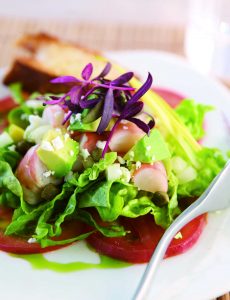 Flavor Foundation
Flavor Foundation
Yamaguchi believes his unique style of cooking stems from his colourful upbringing. The son of a Maui-born military man and an Okinawan-born mother, Yamaguchi was born on an army base near Tokyo in 1956. Some of his most vivid childhood memories were of frequent trips to visit his grandparents in Hawaii. In the 1940s, his grandfather owned a small tavern in Wailuku and was also a pioneer of sorts in the local supermarket industry. However, it was Yamaguchi’s parents who ingrained in him an appreciation of culinary style.
“My father did most of the cooking at home and I enjoyed it,” Yamaguchi says. “I even did a little cooking myself here and there. I also chose home economics in high school.”
The seeds for Yamaguchi’s love of cooking were well and truly sown, but it wasn’t until he left Japan for New York in 1974 and was accepted into the prestigious Culinary Institute of America that he received any formal training in classical traditions.
“When I went to the Culinary, everything gelled together,” he says. “It made me realize that cooking could be my calling in life. What I was doing felt very natural.”
After graduating from the Culinary in 1976, Yamaguchi moved to Los Angeles and began apprenticeships at L’Escoffier, L’Ermitage (under the late master chef Jean Betranou) and Michael’s.
“Once my apprenticeships were finished I had to stand on my own as a chef,” he says. “But I didn’t want to do what everybody else was doing. I said to myself, ‘I have to do something that I can call my own’.
“And so it seemed natural to take my Japanese upbringing – including the flavors of my father’s cooking – my training and everything I was experiencing at that moment and put it all together. When I did that, I realized the backbone of what made me cook the way I did was definitely a foundation of going to a cooking school. But it was also heavily influenced by my knowledge of Asian ingredients and, in particular, my knowledge of Asian flavors, because they were the very same flavors that used to be on my father’s table.”
Yamaguchi carefully threads this intimate knowledge of flavor through each dish with the precision of a neurosurgeon. He doesn’t usually experience any problems marrying rich European sauces with bold Asian flavors because he predominantly sticks to flavors he is familiar with.
“If you understand the theory of food in any culture, then it’s a lot easier to blend different tastes,” he says. “For instance, I don’t put a lot of Indian influence in my food because I don’t really understand all the flavors involved. On the other hand, I’ve travelled to Thailand and China a lot so I put a lot of Thai and Chinese flavors into my cuisine. These elements I understand and I can see these flavors in my mind.
“Because I see these flavors, I can easily blend them with the French sauces that I make. If a chef can’t see these flavors, he or she has to start guessing, and I think that’s where a lot of people end up having a problem. They don’t understand a flavor and therefore can’t really see the outcome of that particular flavor at the end of the cooking process. It’s like a guessing game.”
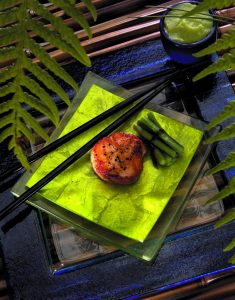 Striking Out On His Own
Striking Out On His Own
Yamaguchi remained in Los Angeles after seeing his apprenticeships through to the end and was appointed executive chef at Le Serene, the Le Gourmet in the Sheraton Plaza La Reina.
In 1984, he opened his own restaurant called 385 North on La Cienega Boulevard in Los Angeles, and began presenting his own unique “Euro-Asian” style of cooking that remains with him to this day.
Critics immediately sat up and took notice of the multifarious flavors embedded in dishes that started to appear on his menus, and it was only a matter of time before the accolades started rolling in. In 1986, Yamaguchi was named “California Chef of the Year” by the California Restaurant Writers Association, and in 1988 was the featured cover story of Bon Appetit’s June issue.
From that moment on, Yamaguchi could do no wrong. His decision in 1988 to renew his acquaintance with Hawaii was met with widespread critical acclaim and within months Roy’s Restaurant in Hawaii Kai was dubbed “the crown jewel of Honolulu’s East-West eateries” (Food & Wine, 1989); was selected twice by Mimi Sheraton as one of Conde Nast Traveller’s “top 50 American Restaurants” (1991,1992); and by early 1992, found itself enshrined in the Nation’s Restaurant News’ “Fine Dining Hall of Fame.” While registering Roy’s Restaurant amongst the United States’ “Top 40” in Forbes’ 1990 FYI, Andre Gayot of Gault Millau said: “Yamaguchi invents his own tropical culinary scenario, blending French, Italian, Thai, Japanese and Chinese cuisines no-one has gone so far yet, at least successfully.”
In addition to his flagship Roy’s in Hawaii Kai, Yamaguchi has since opened more than 30 restaurants in places as diverse as Guam, Hong Kong, California, Seattle, Denver, Phoenix, Florida and New York.
Returning to his Roots
Tokyo has always held out an attraction for Yamaguchi and he longed to open a restaurant here in honor of the city that gave him his earliest culinary roots. Roy’s Restaurant first opened in Tokyo more than 13 years ago, proving popular with suited executives who enjoyed Yamaguchi’s complex creations alongside a bottle or two of new and old world wine.
In October last year, the restaurant shifted from Aoyama to its newest location, deep in the heart of the opulence that is Roppongi Hills. Offering sublime night views of Tokyo Tower and the surrounding districts, the restaurant is a marked improvement from prior Tokyo locations and boasts a warm and enticing atmosphere that makes a refreshing change from a restaurant that is located in one of Tokyo’s most ostentatious neighborhoods. (See page 63.)
As far as the food is concerned, Yamaguchi does not wish to change what has proved to be a winning formula in Tokyo thus far, ensuring that customers experience everything that Roy’s has to offer. He admits that his Tokyo operation is not a carbon copy of what you might find in one of his US locations, but he goes to great lengths to ensure the restaurant retains the integrity of what Roy’s stands for.
“All of our restaurants are different, and we adjust the menu accordingly,” he says. “We have a restaurant in Chicago and a restaurant in New York. Clients look for a lot of smaller portions in these places and don’t mind paying money for the experience. Whereas you look at a city like Dallas and the people there don’t want to be served game birds. It doesn’t get cold, so they’re not after heavy meals. They’re into steak and potatoes.
“Tokyo is the same way,” he adds. “You can’t put 12 ounces of New York steak on a plate in Tokyo. We have to see what people like and alter our menus accordingly. If it doesn’t work it just doesn’t work – simple as that.”
“I want people to enjoy a meal at Roy’s and experience that ‘wow’ impact,” he says. “Even if they have a great meal, most people can’t remember the actual taste of the meal. They’ll only remember that it was great.”
Yamaguchi says he goes out of his way to avoid following flash-in-the-pan cooking trends, especially in a market such as Tokyo that has so much more to offer.
“If you follow trends then you’re not always being true to yourself,” he says. “Instead what you’re doing is trying to reinvent yourself every time. At Roy’s we have a foundation that we’ve built and we believe in what we do. Why would we change what works well?”
He says it is essential for up-and-coming chefs to remain true to themselves, especially if they are looking at developing a style that sets them apart from everybody else.
“It’s not a question being trendy but using ingredients that are in or out. For example, in the US there’s 120-something types of tomatoes. Lettuce is the same. First there was just plain lettuce, which became “iceberg lettuce” and then “baby greens” and, later, “micro.” So in that sense, we follow trends related to specific food products, but not cuisine trends in general.
Yamaguchi believes that one’s fundamental cooking ability is inert, something you are and not something you can become.
“You are basically born with it, born with a passion to cook,” he says. “It’s almost like second nature. You can teach yourself how to cook but it’s all technical. When you have this intangible passion – the way in which you care for people, the way you interact with your customers and, importantly, the way in which you are keen to please – your food comes out differently. It’s something that just comes naturally.”
Looking Ahead
While Yamaguchi still works seven days a week, he spends a little less time in the kitchen than he used to, and more time brainstorming and researching ideas for new dishes.
“My job is not easy,” he says. “Nothing is really easy. But for me I enjoy doing it so it’s never been a chore. Even at the darkest moments, I still think it’s a great job.”
He is planning to expand his culinary empire further, as well as develop his own brand of cookware, Roy’s Fusion Cookware, which features pots, pans, knives and an electronic grill that debuted in October last year.
“I guess I’m using what I know today as far as cooking goes and diversifying it into different parts of the cooking field, he says, adding that he is also designing kitchens for homes on a consultancy basis.
Yamaguchi was admittedly cautious when asked where food was heading in the next five years, foreseeing little change in a restaurant industry that is still primarily dominated by consumer demand.
“When you look at restaurants across the US, you see a lot of chefs doing a lot of different things,” he says. “But I still think the Asian philosophy of cooking is still influential and a lot of chefs are thinking about what people are doing in Asia. At the same time, steak is still huge in America, and high-end seafood restaurants are always going to be big.
“I don’t think there’s going to be too much different, just more people doing more of it.”
Story by Elliott Samuels
From J SELECT Magazine, January 2006




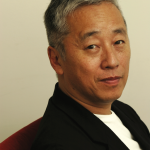

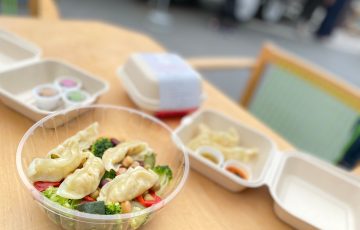
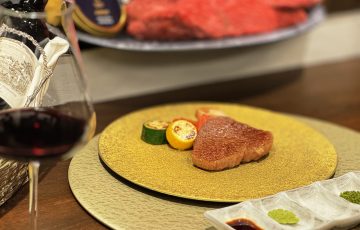
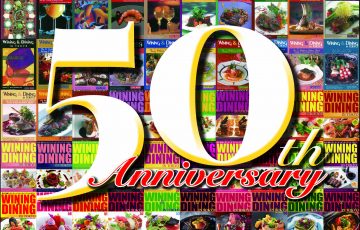

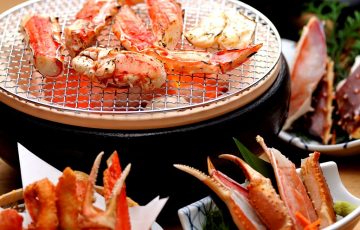

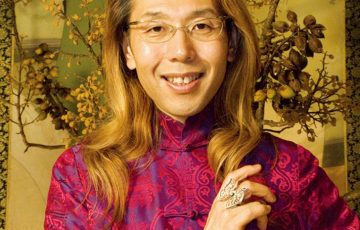


Recent Comments